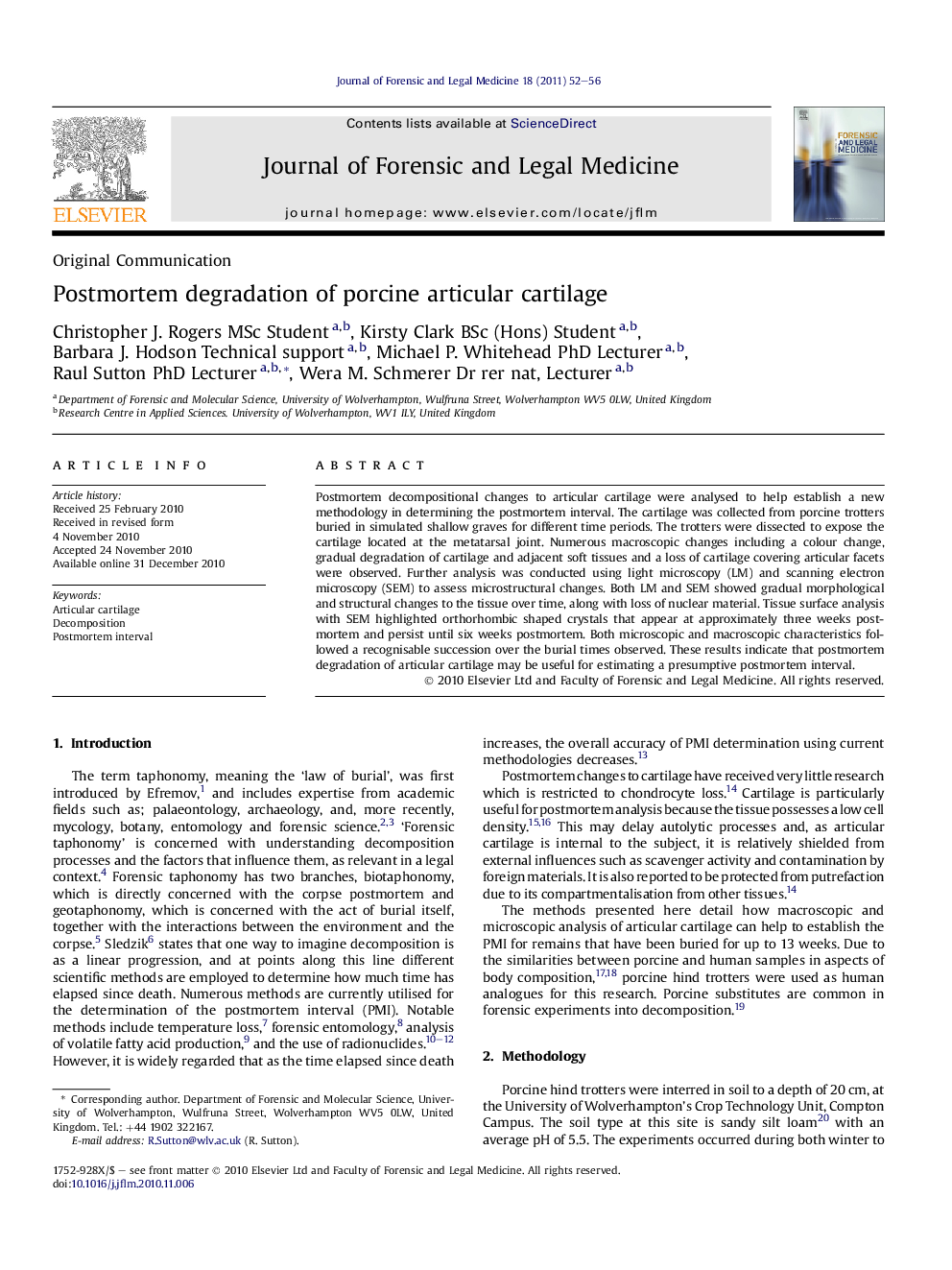| Article ID | Journal | Published Year | Pages | File Type |
|---|---|---|---|---|
| 102791 | Journal of Forensic and Legal Medicine | 2011 | 5 Pages |
Postmortem decompositional changes to articular cartilage were analysed to help establish a new methodology in determining the postmortem interval. The cartilage was collected from porcine trotters buried in simulated shallow graves for different time periods. The trotters were dissected to expose the cartilage located at the metatarsal joint. Numerous macroscopic changes including a colour change, gradual degradation of cartilage and adjacent soft tissues and a loss of cartilage covering articular facets were observed. Further analysis was conducted using light microscopy (LM) and scanning electron microscopy (SEM) to assess microstructural changes. Both LM and SEM showed gradual morphological and structural changes to the tissue over time, along with loss of nuclear material. Tissue surface analysis with SEM highlighted orthorhombic shaped crystals that appear at approximately three weeks postmortem and persist until six weeks postmortem. Both microscopic and macroscopic characteristics followed a recognisable succession over the burial times observed. These results indicate that postmortem degradation of articular cartilage may be useful for estimating a presumptive postmortem interval.
